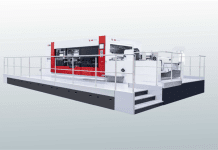The incorporation of energy solutions in electric vehicles (EVs) stands out as a disruptive force in the persistent search for sustainable and eco-friendly transportation. As the world struggles to cut carbon emissions and combat climate change, the importance of creative energy solutions for powering EVs has become critical.
Energy solutions are a diverse set of technologies and strategies that include anything from sophisticated charging infrastructure to cutting-edge energy storage systems, renewable energy integration, and new energy solutions. Understanding and utilizing the potential of energy solutions is critical to unlocking a sustainable future of transportation as the automotive sector undergoes a paradigm shift towards electrification.
Methodology for Using Energy Solutions in Electric Vehicles
The development of electric vehicles (EVs) highlights the crucial need for sustainable energy solutions to sustainably power the future of transportation. This article looks at a complete technique for applying energy solutions to electric vehicles, including topics ranging from charging infrastructure to energy-efficient driving habits.
Charging Infrastructure
The charging infrastructure is at the heart of EV energy solutions. The technique starts with a review of the various charging choices, which range from Level 1 residential charging to high-speed Level 3 DC fast charging. Understanding the benefits and drawbacks of each choice is critical for tailoring energy solutions to the specific demands of EV customers.
Home Charging Optimization
Considerations for optimizing home charging include installing Level 2 chargers, scheduling charging during off-peak hours, and maybe adding solar panels. This section investigates methods for incorporating renewable energy sources at home, minimizing reliance on the grid, and encouraging sustainability.
Public Charging Networks
A significant part of the process is navigating the complexities of public charging networks. This includes investigating the expansion of charging infrastructure, using mobile apps to identify charging stations, and comprehending the effects of different charging networks on charging speed and cost.
V2G Technology
Vehicle-to-grid (V2G) technology is a game-changing mechanism that allows EVs to not only consume but also return excess energy to the grid. This section goes into the possible benefits of V2G, including grid stability, EV revenue generation, and its position in a dynamic energy ecosystem.
Smart Charging Systems
Smart charging systems are essential for optimizing energy solutions. These systems use advanced technology like artificial intelligence and IoT to alter charging schedules dynamically based on electricity pricing, grid demand, and user preferences. The technique investigates the advantages of smart charging in terms of cost savings and grid management.
Energy Storage Solutions
The incorporation of energy storage technologies, such as home batteries or grid-scale storage, is a critical component of the process. This guarantees a regular power supply, reduces the influence of intermittent renewable energy sources, and helps to improve grid resilience.
Energy-Efficient Driving Practices
The methodology extends beyond charging infrastructure to EV user behavior. Promoting energy-efficient driving habits, such as regenerative braking, optimal acceleration and deceleration, and keeping proper tire pressure, has a substantial impact on the total energy efficiency of EVs.
Government Incentives and Policies
A critical component of the process is understanding and leveraging government incentives and policies. This involves looking into tax benefits, rebates, and regulatory frameworks that encourage the use of EVs and help to develop charging infrastructure.
Industry Collaboration and Standards
The technique emphasizes the necessity of industry collaboration and standardization. Harmonizing charging standards, interoperability among multiple charging networks, and coordination between the automotive and energy industries are all critical concerns for an efficient and seamless EV ecosystem.
Future Trends and Innovations
The technique concludes by anticipating future trends and innovations in electric vehicle energy solutions. This includes researching battery technology breakthroughs, wireless charging integration, and the role of artificial intelligence in optimizing charging procedures.
Sum Up
The process for implementing energy solutions in electric vehicles is complex, spanning everything from charging infrastructure to user behavior and future trends. Stakeholders in the electric vehicle ecosystem may contribute to a sustainable and efficient transportation future by taking a holistic approach, pushing widespread adoption of EVs, and limiting the environmental impact of traditional vehicles.








